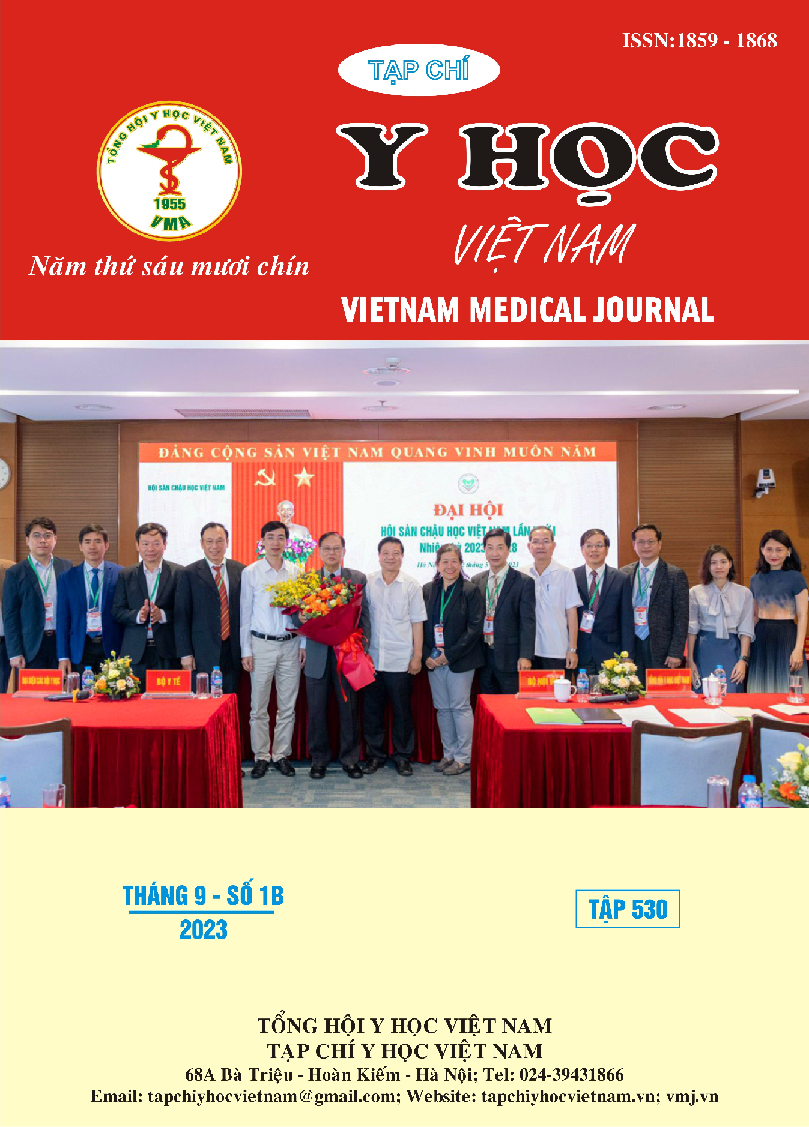MANAGEMENT OF CLASS III MALOCCLUSION SURGICAL TREATMENT WITH 3D SOFTWARE SUPPORT AT NATIONAL HOSPITAL OF ODONTO-STOMATOLOGY HANOI, VIETNAM
Main Article Content
Abstract
Objectives: This study aimed to evaluate the outcomes of surgical treatment for Class III malocclusion using orthognathic surgery with 3D software support. Subjects and Methods: The study was conducted on 30 patients with Class III malocclusion, as per Angle's classification, who underwent orthognathic surgery at the National Hospital of Odonto-Stomatology Hanoi, Vietnam, between 2020 and 2023. Results: Postoperative complications were rare, with only one case of postoperative bleeding and two cases of sensory disturbance, all resolved entirely within six months. Anatomically, the bones were successfully repositioned, significantly improving most craniofacial indices, approaching standard values. Functionally, after surgery, 100% of the cases achieved Class I dental occlusion, according to Angle. The cases of anterior crossbite, posterior crossbite, and anterior edge-to-edge bite were thoroughly corrected. The majority of cases showed canine-guided occlusion (23 out of 30). Temporomandibular joint dysfunction decreased, and in two cases, the joint dislocation ceased during wide mouth opening or yawning. Aesthetically, 83.3% of patients reported very satisfactory results, while 16.7% expressed satisfaction despite slight asymmetry in the chin and lower border of the mandible. Bone stabilization showed recurrence mainly within the first three months after surgery, with varying recurrence in different locations and dimensions (more in the vertical dimension). Conclusion: 3D software-assisted orthognathic jaw surgery yielded positive outcomes in both functional and aesthetic aspects for patients with Class III malocclusion.
Article Details
Keywords
Orthognathic surgery, Class III malocclusion, Lefort I, BSSO, 3D software.
References
2. Chris J. (2006), "Class III surgical-orthodontic treatment: A cephalometric study", Am. J. Orthod Dentofacial Orthop.130(3), pp.300- 309.
3. Robl M.T., Farrell B.B., Tucker M.R. (2014). Complications in orthognathic surgery: a report of 1,000 cases. Oral Maxillofac Surg Clin North Am, 26 (4), 599-609
4. Sebastiani A.M., Baratto-Filho F., Bonotto D., et al. (2016). Influence of orthognathic surgery for symptoms of temporomandibular dysfunction. Oral surgery, oral medicine, oral pathology and oral radiology, 121 (2), 119-125.
5. Yung S.Y., Uhm K.I., et al. (2015), Bone and Soft Tissue Changes after Two-Jaw Surgery in Cleft Patients, Arch Plast Surg, 42(4), pp.419-23.


